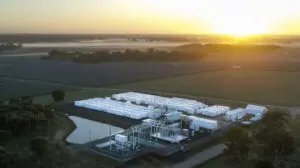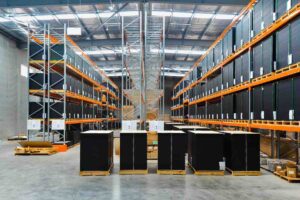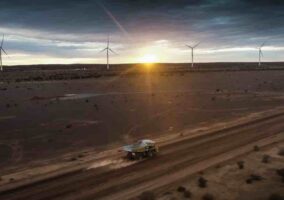A University of Wollongong (UoW) study seeking to smooth the integration of variable renewables on Australia’s electricity grid has received a funding boost from the Albanese government.
The $1.04 million from the Australian Renewable Energy Agency (ARENA) will support UoW research on the development of a methodology to help energy grids to safely accommodate more wind and solar generation.
Specifically, the research project is looking to help overcome the effects of voltage waveform distortion, known as harmonics, which can adversely effect grids and serve to hold back the integration of renewable energy sources.
The UoW study seeks to address challenges with the current harmonic compliance assessment framework by developing a new and robust methodology to be used across Australia’s energy grids.
When completed, the new methodology would be used as an interim best practices guideline for participating industry stakeholders, as well as being the basis for a submission to amend the Australian Standards.
“The University of Wollongong is tackling a very important project in harmonics that has the potential to benefit our energy transition by reducing the grid connection costs associated with renewable energy generation, while also addressing the integration challenges of new grid scale supply,” said Darren Miller, Arena CEO.
“This will help ensure secure and reliable grid operation at high levels of renewables penetration.
“With close collaboration from stakeholders involved, this project could help reduce the requirements for costly harmonic mitigation, reduce the number of abandoned renewable energy projects, and shorten the time frame for the grid connection process.”
As Arena explains, harmonics “are a periodic distortion of the voltage waveform and can be caused by the inverters used by renewable energy generators and storage devices.”
“Network Service Providers (NSPs) are required to ensure that voltage waveform distortion present on the network is below the level of equipment tolerance to ensure grid-connected equipment operates as intended.
“If harmonic distortion exceeds the tolerance, equipment may be impacted by reduced efficiency, reduced life and operational failure. The assessment of compliance with harmonic emission allocations is undertaken to ensure this tolerance is not breached.”
Unfortunately, according to Arena, current regulatory guidelines do not account for the recent complexities arising by the integration of variable renewable generation sources like wind and solar.
The University of Wollongong study will therefore seek to provide a best practices methodology for all stakeholders to apply.
Expected to take place over a period of 29 months, the UoW study will also dedicate five months to developing all the relevant documentation to be used in a submission process to amend the Australian Standards and the National Electricity Rules.
“We are extremely excited to be undertaking this project with the support of Arena and our industry partners,” said Associate Professor Duane Robinson, director of the Australian Power Quality and Reliability Centre at the University of Wollongong.
“As an industry facing research centre, we expect the outcomes of this very practical work to provide clarity with respect to the methodologies for compliance assessment for harmonic distortion leading to less complex connection processes and even more renewable energy in our power system.”










